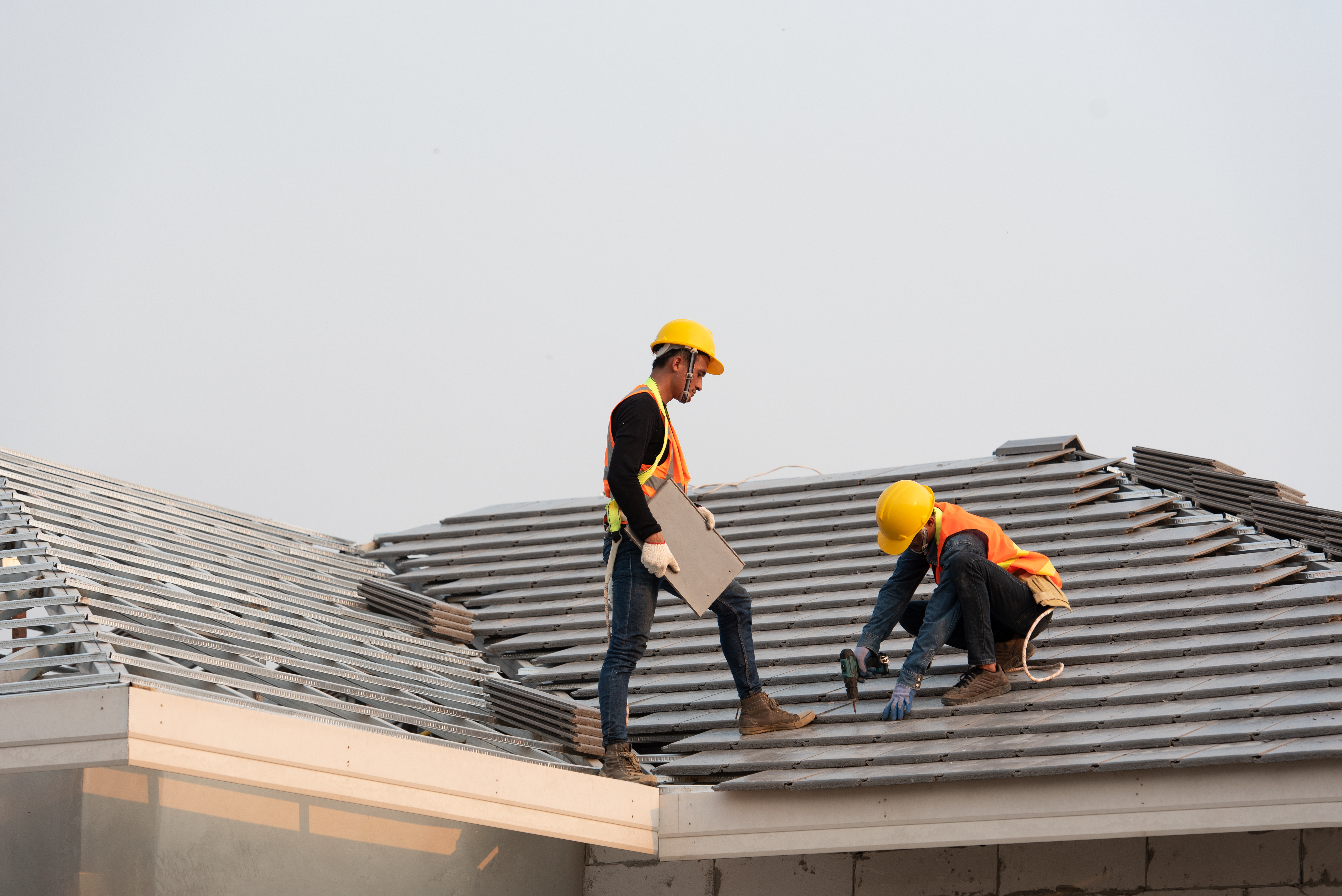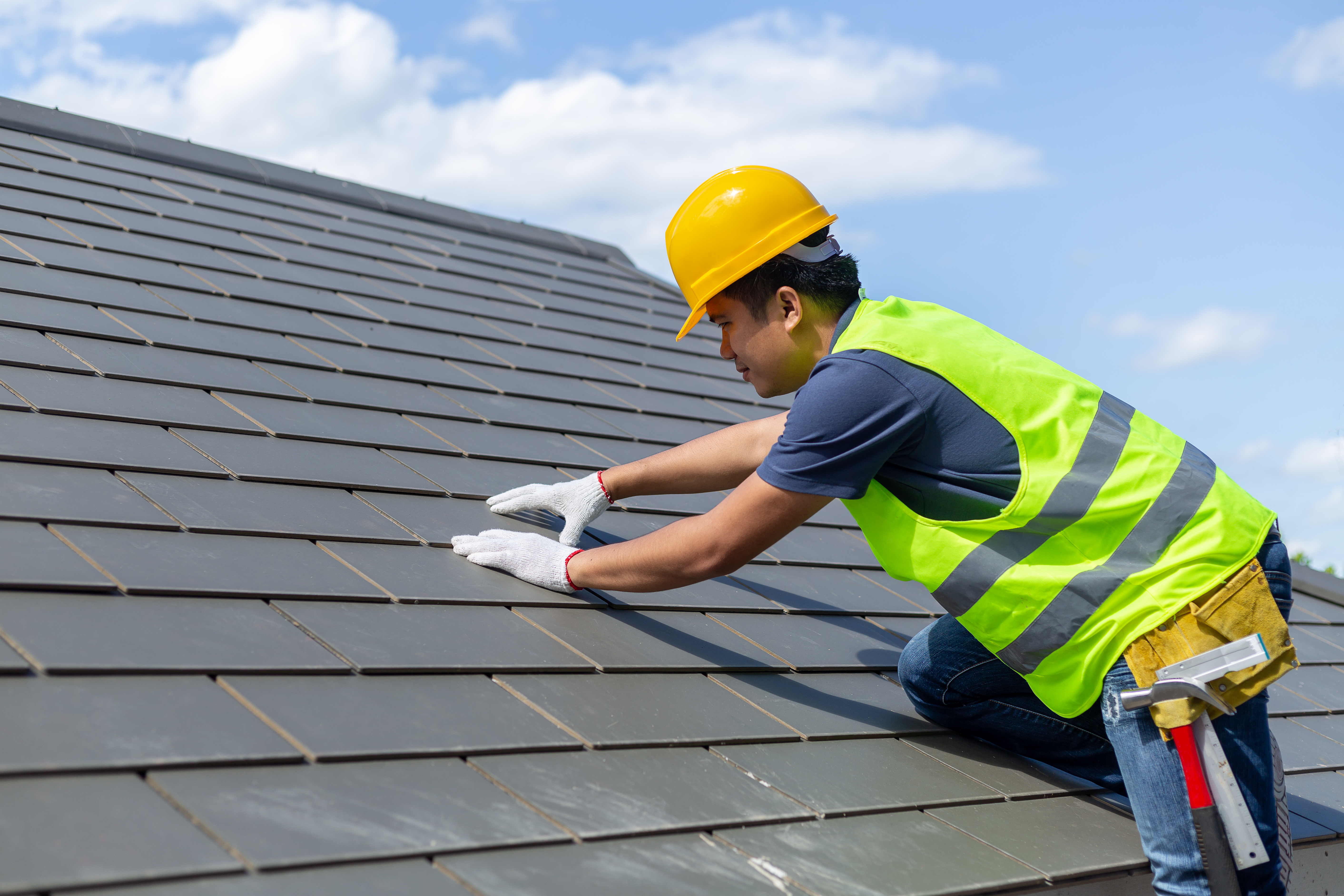Most Energy-Efficient Roofing Systems & Designs in 2022

If you’re looking for ways to save energy, roofing has a huge impact on your home’s overall energy efficiency. Most importantly, it’s how cool you’ll stay during the dog days of summer. Your roof doesn’t just protect you and your family from the outside elements, it can also be a way to increase your household sustainability.
Energy-efficient roofs, in fact, are one the best ways to keep your home comfortable inside, despite sweltering temperatures outside. Below, we’ll explore the benefits of energy-efficient roofing systems and how they can help you achieve a lower carbon footprint. Plus, they may even help you save on your energy bills!
Why should I consider replacing or coating my current roof?
During the warmer months, a non-reflective roof can attract incredible amounts of heat. In fact, your home’s roof will be significantly hotter than the surrounding air. Even if you have adequate insulation, the heat permeates the roof and raises the temperatures on the top floors or attic of your home. In turn, your air conditioner is strained because it’s in a constant state of cooling off your home from the continual influx of heated air. The solution? Replace or treat your roof with reflective, cooling materials.
Although a roof replacement may be a significant project, it’s a worthwhile endeavor that may end up paying for itself over time. And, if you’re not ready to commit to a full replacement of your roof, you can also apply an energy-efficient roof coating at a much smaller price point.
Heating and cooling make up around half of a home’s energy consumption expenses. Cool roof benefits include staying up to 60 degrees cooler than traditional black roofs and reducing your air conditioning costs by around 15%. Some cities and local municipalities may even offer tax incentives for installing a more energy-efficient roof.
Installing a New Roof vs. Coating an Old Roof
If you’re trying to decide between installing a cool roof or coating your old one, it’s important to crunch the numbers to determine what makes the most sense in terms of your potential savings. You may want to consider a variety of factors when choosing your roof like the following:
- your local climate
- your insulation
- your current roof’s age
- the efficiency of your HVAC unit
Pro Tip: If your roof is deteriorating and reaching the end of its lifespan, it may be a good idea to just replace your roof completely.
Energy-Efficient Roofing Options
Regardless of what kind of roof or roofing material you choose, make sure that it has an ENERGY STAR label. This is a government certification that verifies the materials used are sustainable and proven to improve energy-efficiency.
In most cases, the most important element of energy-efficient roofs is solar reflectance, or how much a given roofing material can reflect the sun’s rays and push that solar energy back into the surrounding environment. Highly reflective roofing materials help keep the upper floors of your home cooler, so your AC unit doesn’t have to work as hard to keep your living spaces comfortable.
Does your roofing color matter?
Yes and no. While darker colors are more likely to absorb heat than lighter colors, the energy-efficiency of the material has a much bigger impact than the color. With that said, you can still choose from a range of colors that fit your vision. Even energy-efficient roofing shingles constructed from darker materials will offer more energy-saving benefits than lighter-colored, but inefficient, roofing.
What should I look for in my energy-efficient roofing material?
For the most energy-efficient roof design it's important to consider the roofing material being used.
- High solar reflectivity: How much the material can reflect solar energy
- High emittance: How well the roof material can send solar energy back into the surrounding environment
- Endurance of reflectivity over time: How efficiently the roof can reflect solar energy over time

Types of Roofing
Metal Roofs
Metal roofing is the most reflective and often the best performing from an energy efficiency standpoint. They also offer plenty of color choices. Although metal roofs can reflect heat well, they’re not good at thermal emittance. This is important because a cool roof should push heat back into the surrounding air rather than holding it in and creating a “broiler effect”. You can improve your metal roofing’s thermal emittance by applying a cool reflective coating.
Tile Roofs
Tile roofing offers homeowners both thermal resistance and a higher reflective value compared to regular asphalt shingles. The airspace around the tiles also helps create a natural airflow that acts as a barrier against heat. Tile roofs can be clay, slate, or concrete and many are naturally reflective enough to be considered cooling. To increase the cooling effects, you can apply a surface treatment to make the tiles more reflective.
Composite/Asphalt Roofs
Asphalt shingles are the most common roofing material, but they can act as a heat attractor. With that said, there are certain cool-rated asphalt shingles that offer better energy-efficiency. Cool asphalt shingles use coated granules for better solar reflectivity. Coating existing asphalt shingles is not recommended by shingle manufacturers, so it’s best to only go this route if you’re fully replacing your roof.
Cool Roof Coatings
Another option homeowners have is coating an existing roof with a cool roof coating. These coatings are usually white or reflective. They protect the roofing system from UV damage and help reflect solar energy back into the environment. It’s important to research whether your current roof is compatible with a cool roof coating before choosing this option.
Green Roofs
If you live in an area where building codes permit it, a green roof is an environmentally friendly alternative to traditional roofing systems. A green roof, also known as a living roof, is a roof that is either completely or partially covered with plants and a growing medium, placed over a waterproofed membrane. In many cases, green roofs also feature root barriers, drainage, and irrigation systems.
So, how does having a bunch of plants on your roof help reduce your energy usage? Well, the growing medium and plants insulate the build from high temperatures and decrease any heat gains. One study found that even a small green roof can help reduce energy use by 75%.
Green roofs also act as a sponge to help reduce excessive stormwater runoff, remove air impurities, produce oxygen, and provide shade coverage. If you’re interested in building your own, check out our guide on how to build a green roof.
How to Pay for Your Energy-Efficient Roofing
Need help to finance your new roof? Investing in a new roofing system may qualify for PACE financing. PACE is designed specifically for homeowners looking to make sustainable improvements to their homes. You can start your project without any upfront costs and enjoy your potential new roof energy savings more quickly. Homeowners just pay the financed amount over time as part of their annual property tax bill.
Takeaways: Energy-efficient roofing to keep you and your family cool and comfortable
If you’re ready to switch your old roofing system out for a better, more energy-efficient version to help heat-proof your home in time for summer, Ygrene can help. With PACE financing, you can make those changes and enjoy a cooler, more comfortable home.




